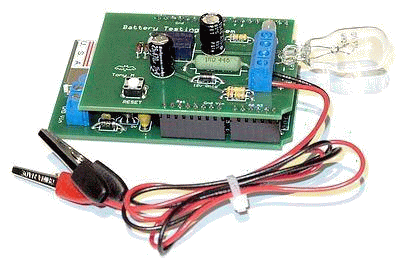| Many of the projects I have worked with
over the years involved some form of data collecting.
First it was data regarding streamside fish egg
incubators in Idaho... then there were data loggers for
weather info ... and radiation levels ... and now bat
call data and bat activity levels. For each one of these applications I had to search out a data logging solution to record the data my equipment was producing. Most of the time I used a commercially available hardware platform to do the work ... but those kept disappearing from the market. Recently, Frank and I have been experimenting with the Arduino system, and it has turned out to be very adaptive to our work. Then I realized that I could use what I've learned from our Arduino experiments to make an optimized general purpose data logging solution that could be applied to any data collecting project ... and be something that we would have complete control over ... it wouldn't disappear from the market !! This was the birth of the idea that led to the Data Recorder Platform, or DRP. |
||
| The DRP is shown to the left. It
has an ATMEGA-328 microcomputer as it's heart, seen to
the right side of the board. The ATMEGA is programmed
with an Arduino UNO bootloader, so can load and
run Arduino programs. The ATMEGA is clocked with
a 16 MHz crystal oscillator to make timing as accurate as
possible. Just to the left of the processor is a TMP36 analog temperature sensor. There is also a pair of resistors that provide an analog voltage to track the battery level that is powering the DRP. In the middle of the circuit board is the DS1307 RTC/Calendar chip, with its crystal and backup battery. This allows accurate date and time stamping of the data collected. |
||
| On the upper left you can see there is an
SD card holder, interfaced with the processor via a 3.3
volt level shifting IC. The on-board 5 volt and 3.3 volt
regulators are just to the right of the two position
power connection terminal block. There is also a reverse
voltage protection diode. A lot of the processor I/O is dedicated to the SD card, RTC, temperature and battery measurement. There are seven ATMEGA I/O ports that are made available at the DRP headers for use by a stacked shield. Two of these, analog 2, and digital 2, are meant to be the primary data inputs. The other five pins, digital 5, 6, 7, 8, & 9, are available for shield peripheral functions - like actuating relays, lighting LED's, driving piezo sounders, or monitoring push button switches. The headers are organized the same as the Arduino UNO, Rev 3, and also provide Vin, 5V, Reset, and ground connections. There is also a 4 position header port that can be optionally used to connect a serial device. I use this port as a connection to the Arduino IDE, via an FTDI interface, for development and programming. Most of the time, the ATMEGA chip will be preprogrammed when a DRP is built, and the serial port is not needed. Here is a link for the schematic diagram of the DRP. |
||
